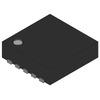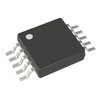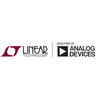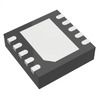Manufacturer Part Number
LT3757IDD
Manufacturer
Analog Devices
Introduction
The LT3757IDD is a versatile DC DC switching controller designed for power management, capable of driving a transistor for step-up, step-up/down applications, and more, with a focus on efficiency and flexibility.
Product Features and Performance
Supports step-up, step-up/step-down conversion
Functionality for boost, flyback, and SEPIC topologies
Capable of driving single output with positive and negative configurations
Wide input voltage range: 2.9V to 40V
Adjustable switching frequency: 100kHz to 1MHz
Clock synchronization feature for reduced EMI
Includes features like Enable, Frequency Control, and Soft Start for enhanced performance
Operating temperature range: -40°C to 125°C
Product Advantages
Versatility in supporting multiple topologies and output configurations
Broad input voltage range suitable for various power sources
High-frequency operation allows for smaller external components
Clock synchronization to minimize interference and noise
Key Technical Parameters
Voltage Supply (Vcc/Vdd): 2.9V ~ 40V
Frequency Switching: 100kHz ~ 1MHz
Number of Outputs: 1
Output Phases: 1
Operating Temperature: -40°C ~ 125°C
Quality and Safety Features
Built to operate reliably in a wide temperature range
Enhanced safety through soft start and frequency control features
Compatibility
Compatible with a wide range of inductors and capacitors due to its flexible switching frequency
Suited for various applications due to its support for both positive and negative output configurations
Application Areas
Suitable for industrial, telecommunications, automotive, and battery-powered applications
Ideal for power conversion in embedded systems, portable devices, and more
Product Lifecycle
Status: Obsolete
Potential buyers should consider future availability and plan for replacements or upgrades
Several Key Reasons to Choose This Product
Flexibility in design with support for multiple topologies
Wide input voltage range accommodating various power sources
High switching frequency promotes compact design with smaller components
Clock synchronization minimizes noise, benefitting sensitive applications
Robust operating temperature range ensures reliability in extreme conditions



 LT3757HMSELinear Technology / Analog Devices
LT3757HMSELinear Technology / Analog Devices LT3757IDD#TRPBFAnalog Devices Inc.IC REG CTRLR MULT TOPOLOGY 10DFN
LT3757IDD#TRPBFAnalog Devices Inc.IC REG CTRLR MULT TOPOLOGY 10DFN LT3757MPMSE#PBF
LT3757MPMSE#PBF